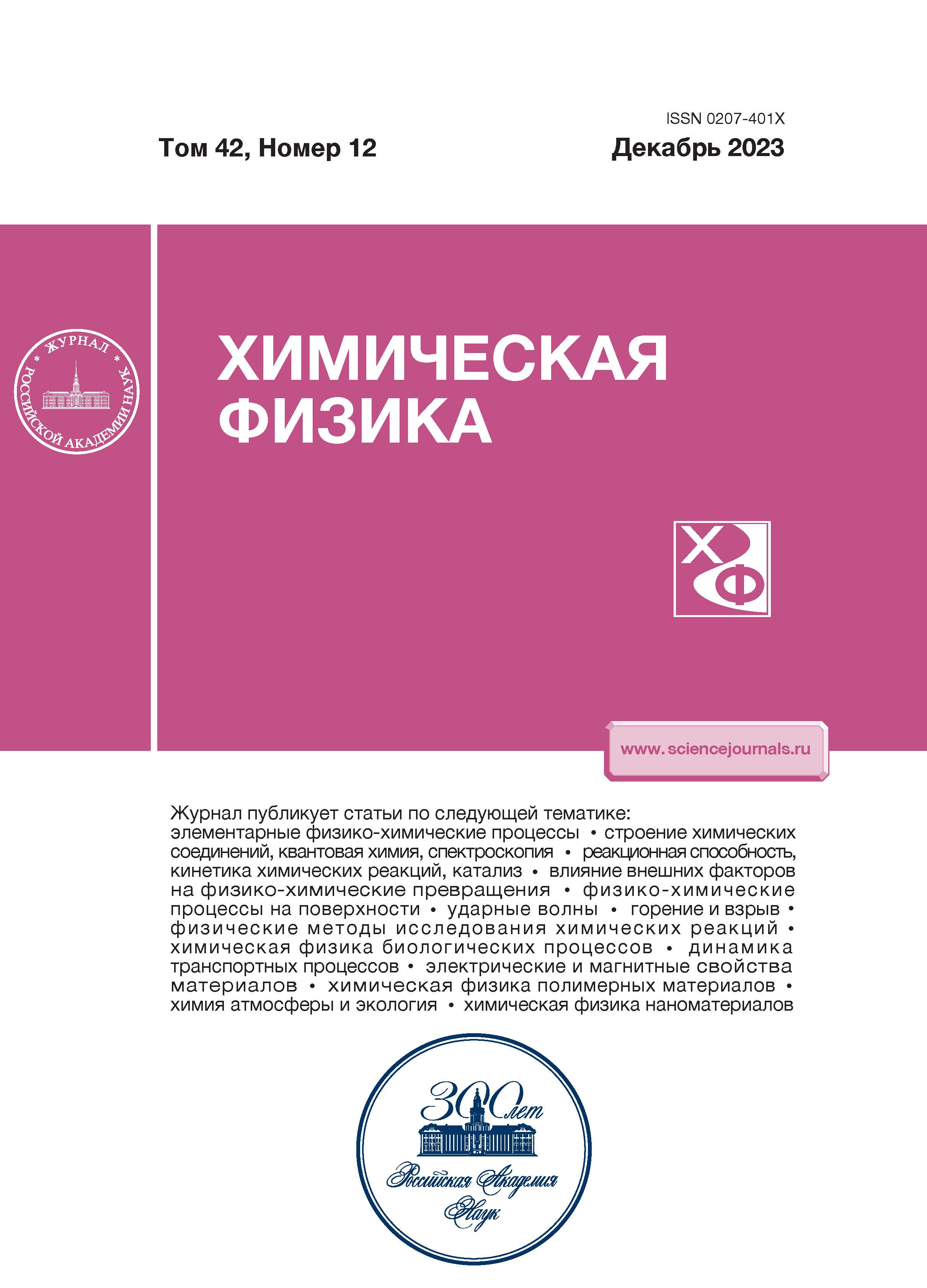An Electrostatic Mechanism for the Formation of Hybrid Nanostructures Based on Gold Nanoparticles and Cationic Porphyrins
- 作者: Povolotskiy A.V.1, Soldatova D.A.1, Lukyanov D.A.1, Solovieva E.V.1
-
隶属关系:
- Institute of Chemistry, St. Petersburg State University
- 期: 卷 42, 编号 12 (2023)
- 页面: 70-74
- 栏目: Chemical physics of nanomaterials
- URL: https://cardiosomatics.ru/0207-401X/article/view/675014
- DOI: https://doi.org/10.31857/S0207401X23120087
- EDN: https://elibrary.ru/QTFPLH
- ID: 675014
如何引用文章
详细
interaction of cationic porphyrin with gold nanoparticles (GNPs) coated with polymer shells
with positive and negative surface potentials in an aqueous solution is studied. The criteria for the formation
of hybrid molecular-plasmon nanostructures based on the determination of the luminescence quenching
mechanism according to the Stern-Volmer equation and the change in the shape of the porphyrin luminescence
spectrum are established. The effect of the sign of the zeta potential of GNPs on the formation of hybrid
molecular-plasmon nanostructures due to electrostatic interaction is established.
作者简介
A. Povolotskiy
Institute of Chemistry, St. Petersburg State University
Email: alexey.povolotskiy@spbu.ru
St. Petersburg, Russia
D. Soldatova
Institute of Chemistry, St. Petersburg State University
Email: alexey.povolotskiy@spbu.ru
St. Petersburg, Russia
D. Lukyanov
Institute of Chemistry, St. Petersburg State University
Email: alexey.povolotskiy@spbu.ru
St. Petersburg, Russia
E. Solovieva
Institute of Chemistry, St. Petersburg State University
编辑信件的主要联系方式.
Email: alexey.povolotskiy@spbu.ru
St. Petersburg, Russia
参考
- Lascu A., Birdeanu M., Taranu B., Fagadar-Cosma E. // J. Chem. 2018. V. 2018. P. 1; https://doi.org/10.1155/2018/5323561
- Kundu S., Patra A. // Chem. Rev. 2017. V. 117. P. 712; https://doi.org/10.1021/acs.chemrev.6b00036
- Yang J., Peng Y., Li S. et al. // Coord. Chem. Rev. 2022. V. 456. P. 214391; https://doi.org/10.1016/j.ccr.2021.214391
- Тертышная Ю.В., Лобанов А.В., Хватов А.В. // Хим. физика. 2020. Т. 39. № 11. С. 52; https://doi.org/10.31857/S0207401X20110138
- Yanagi R., Zhao T., Solanki D. et al. // ACS Energy Lett. 2022. V. 7. P. 432; https://doi.org/10.1021/acsenergylett.1c02516
- Zhang S., Geryak R., Geldmeier J. et al. // Chem. Rev. 2017. V. 117. P. 12942; https://doi.org/10.1021/acs.chemrev.7b00088
- Povolotskiy A., Evdokimova M., Konev A., Kolesnikov I., Povolotckaia A., Kalinichev A. // Springer Ser. Chem. Phys. 2019. V. 119. P. 173; https://doi.org/10.1007/978-3-030-05974-3_9
- Клименко И.В., Градова М.А., Градов О.В., Бибиков С.Б., Лобанов А.В. // Хим. физика. 2020. Т. 39. № 5. С. 43; https://doi.org/10.31857/S0207401X20050076
- Romera C., Sabater L., Garofalo A. et al. // Inorg. Chem. 2010. V. 49. P. 8558; https://doi.org/10.1021/ic101178n
- Schulz S., Ziganshyna S., Lippmann N. et al. // Microorganisms. 2022. V. 10. P. 858; https://doi.org/10.3390/microorganisms10050858
- Liu X., Atwater M., Wang J., Huo Q. // Colloids Surf., B. 2007. V. 58. P. 3; https://doi.org/10.1016/j.colsurfb.2006.08.005
- Ou Z., Yao H., Kimura K. // Chem. Lett. 2006. V. 35. P. 782; https://doi.org/10.1246/cl.2006.782
补充文件













